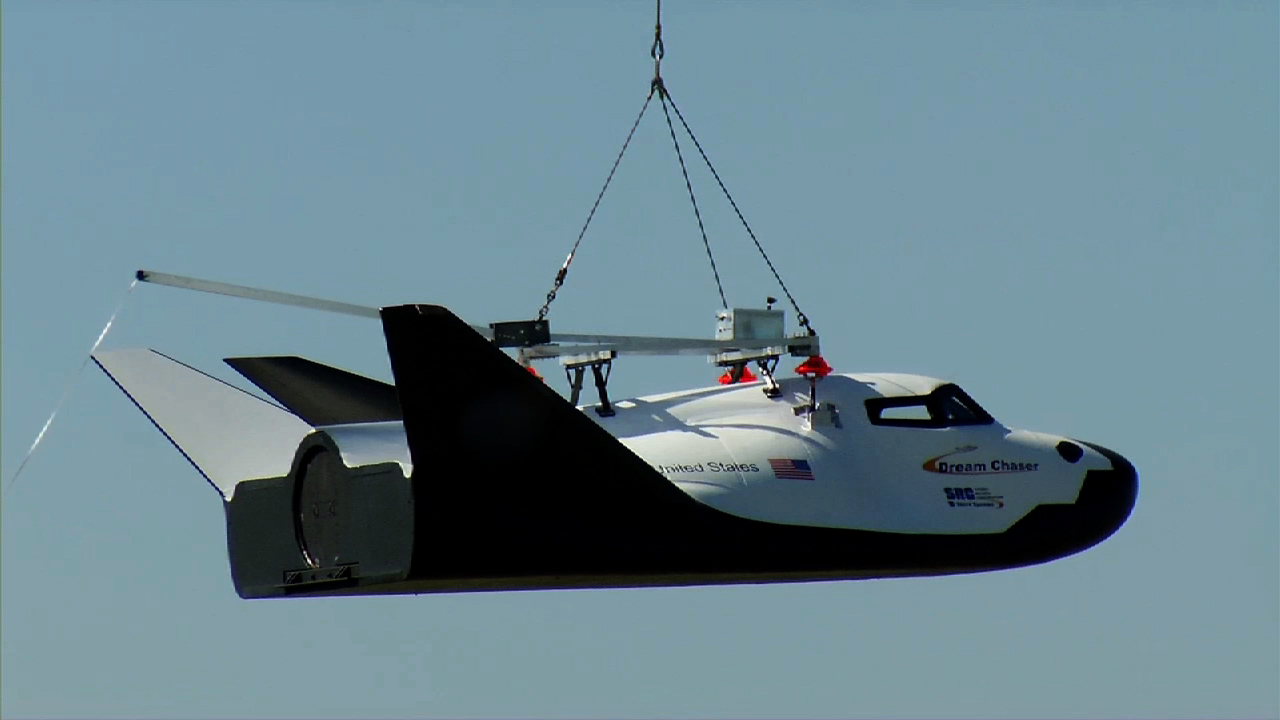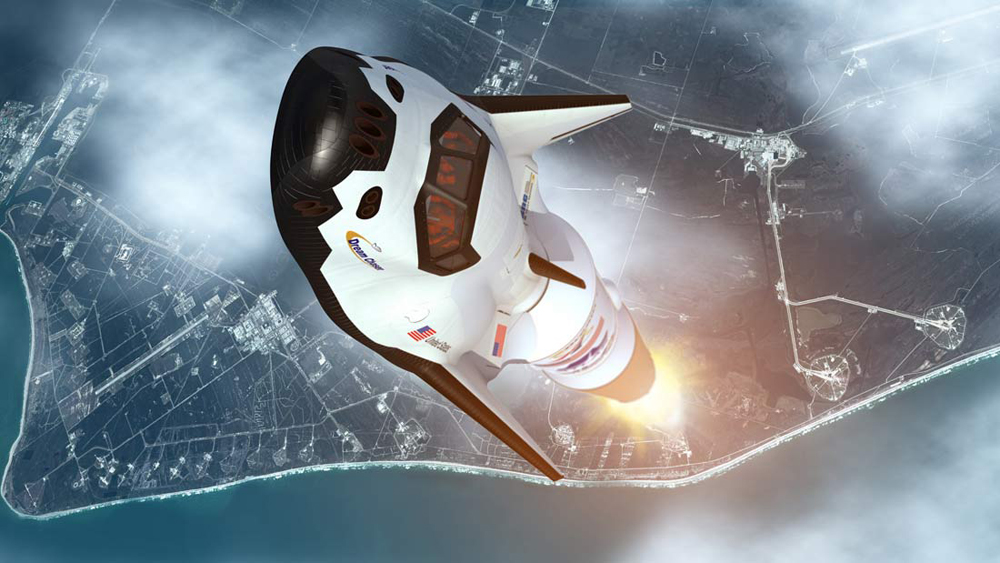
A private space plane is slated to fly on its own for the first time in the next six to eight weeks, a key drop-test milestone in the vehicle's quest to fly astronauts on roundtrip space missions.
The Dream Chaser spacecraft, built by aerospace firm Sierra Nevada Corp., will be released by a carrier helicopter at an altitude of 12,000 feet (3,657 meters) or so, then fly back and land autonomously on a runway at NASA's Dryden Flight Research Center in California.
The unmanned 30-second drop test will kick off a series of trials that culminate in trips to low-Earth orbit and back, potentially paving the way for contracted, crew-carrying flights to the International Space Station for NASA, company officials said during a press conference today (Jan. 30).
The seven-passenger Dream Chaser looks a bit like a miniature space shuttle. It's about 29.5 feet (9 m) long and has a wingspan of 22.9 feet (7 m). For comparison, NASA's space shuttle was 122 feet (37 m) long, with a wingspan of 78 feet (24 m). [Gallery: Meet the Dream Chaser Space Plane]

Filling the space shuttle's shoes
Colorado-based Sierra Nevada is one of several spaceship-building companies to receive funding from NASA's commercial crew program, which is encouraging private American vehicles to fill the void left by the space shuttle fleet's retirement in 2011.
In its latest round of awards, NASA granted funding to Sierra Nevada for the Dream Chaser and to SpaceX and Boeing, which are working on capsules called Dragon and the CST-100, respectively. The Dream Chaser space plane is the only non-capsule design being developed by a major contender.
Get the Space.com Newsletter
Breaking space news, the latest updates on rocket launches, skywatching events and more!
The space agency hopes at least one of these vehicles is ready to fly astronauts to and from the space station by 2017. Until such homegrown private spaceships come online, NASA and the nation are dependent on Russian Soyuz spacecraft to provide this orbital taxi service.
The newly announced drop test is a step along the path to orbit. It will mark the first time the Dream Chaser has ever flown solo, though the space plane did take to the skies last year in a captive-carry test, during which it was held aloft the entire time by a heavy-duty helicopter.
The Dream Chaser drop-test vehicle is currently at a facility in Colorado, but it will be moved to Dryden in about two weeks, officials said. The first flight test should come four to six weeks after that, with two to five more flights following to gather additional data about the vehicle's in-air performance.
"The first flight test is just to make sure it will fly, everything works properly, we land on the runway safely," said Sierra Nevada's Jim Voss, head of the Dream Chaser program and a former space shuttle astronaut. "We'll put in maneuvers on the following tests that will gather the coefficients that we need to properly define the aerodynamic characteristics of the vehicle."
A testing campaign
If everything goes well with the upcoming series of tests, Sierra Nevada will conduct more extensive flight trials with another Dream Chaser vehicle, officials said.
"It will be similar to this vehicle, but we'll be able to pilot it with a test pilot on board, and then that same vehicle will be ultimately used for an orbital flight to demonstrate the capability of the Dream Chaser in orbit," Voss said.
Aerospace giant Lockheed Martin will help build that more advanced flight-test vehicle, as part of an extensive partnership with Sierra Nevada that the companies just announced today.
"They're building the structure for that vehicle, as we finish the design of some of the other systems we'll use for that additional flight test that we'll do in about a year to 18 months," Voss said.
Follow SPACE.com senior writer Mike Wall on Twitter @michaeldwall or SPACE.com @Spacedotcom. We're also on Facebook and Google+.
Join our Space Forums to keep talking space on the latest missions, night sky and more! And if you have a news tip, correction or comment, let us know at: community@space.com.

Michael Wall is a Senior Space Writer with Space.com and joined the team in 2010. He primarily covers exoplanets, spaceflight and military space, but has been known to dabble in the space art beat. His book about the search for alien life, "Out There," was published on Nov. 13, 2018. Before becoming a science writer, Michael worked as a herpetologist and wildlife biologist. He has a Ph.D. in evolutionary biology from the University of Sydney, Australia, a bachelor's degree from the University of Arizona, and a graduate certificate in science writing from the University of California, Santa Cruz. To find out what his latest project is, you can follow Michael on Twitter.









